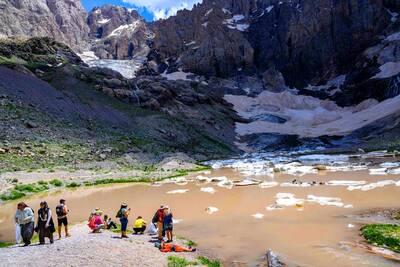Scientists have managed to make old skin in mice young again after just two weeks of treatment by blocking a single gene, a study released on Thursday showed.
They did this by creating genetically modified mice with a defective gene that can be switched off so that their cells ceased to age when a cream was applied to the skin.
While still years from being determined safe for use in humans, the discovery offers hope of one day reversing many age-related illnesses and injuries as the technique may work on any kind of organ or tissue.
"Previous work has shown you can reverse aging by really drastic measures" such as a near starvation diet or "connecting the circulation of a young animal to an old animal," said lead researcher Howard Chang of the Stanford University School of Medicine in California.
"Here we show that aging in mouse skin can be reversed by blocking a single gene," he said.
"These findings suggest that aging is not just a result of wear and tear, but is also the consequence of a continually active genetic program that might be blocked for improving human health," Chang said.
Chang's team uses a complex computer analysis to discover that a single protein is the "shared driving force for the genetic changing associated with aging in lots of different tissues," he said in a telephone interview.
They then designed a genetically modified mouse in which this gene would switch off only when the animal was quite old.
"We even engineered it in such a way that we can actually turn off that defective version in some parts of the animal and not the rest," he said.
"We made this animal in such a way that it would respond to a cream that contained a specific chemical and we put the cream only on one half of the animal ... so the rest of the animal was still old," he said.
Two weeks later, both the gene expression profile and the tissue characteristics of the treated skin had reverted to that of a young mouse.
While the idea of taking a full-body dip in the fountain of youth might sound like a fantastic idea, there are good reasons to target only specific areas of the body for treatment.
The same gene that stimulates aging, NF-eB, is also involved in the immune system and other cell functions so if it was blocked in the entire body it could cause death, Chang said.
The next step is to see if blocking the gene will also reverse aging in other tissues such as the heart and lungs.
There is also the question of whether the effect will last if the treatment is continued or if the tissues will rapidly revert back to their previous aged state if the treatment is stopped.
Other researchers are already looking at ways to block the gene in humans using drugs because of its role in the immune system, Chang said.
Further experiments will show if one of those drugs can effectively be used to block the gene in targeted ways for anti-aging purposes.
"What I hope won't happen is a lot of people calling me up to make an appointment to have their face rejuvenated," Chang said.
Even if researchers are able to develop a safe way to use the treatment on humans, there will always be serious risks involved in genetic intervention.
"A lot of people in the field shy away from the fountain of youth and rejuvenation and focus on extracting quality of life," he said.
The study will be the cover story of the Dec. 15 edition of the journal Genes and Development.

In the sweltering streets of Jakarta, buskers carry towering, hollow puppets and pass around a bucket for donations. Now, they fear becoming outlaws. City authorities said they would crack down on use of the sacred ondel-ondel puppets, which can stand as tall as a truck, and they are drafting legislation to remove what they view as a street nuisance. Performances featuring the puppets — originally used by Jakarta’s Betawi people to ward off evil spirits — would be allowed only at set events. The ban could leave many ondel-ondel buskers in Jakarta jobless. “I am confused and anxious. I fear getting raided or even

Kemal Ozdemir looked up at the bare peaks of Mount Cilo in Turkey’s Kurdish majority southeast. “There were glaciers 10 years ago,” he recalled under a cloudless sky. A mountain guide for 15 years, Ozdemir then turned toward the torrent carrying dozens of blocks of ice below a slope covered with grass and rocks — a sign of glacier loss being exacerbated by global warming. “You can see that there are quite a few pieces of glacier in the water right now ... the reason why the waterfalls flow lushly actually shows us how fast the ice is melting,” he said.

Eleven people, including a former minister, were arrested in Serbia on Friday over a train station disaster in which 16 people died. The concrete canopy of the newly renovated station in the northern city of Novi Sad collapsed on Nov. 1, 2024 in a disaster widely blamed on corruption and poor oversight. It sparked a wave of student-led protests and led to the resignation of then-Serbian prime minister Milos Vucevic and the fall of his government. The public prosecutor’s office in Novi Sad opened an investigation into the accident and deaths. In February, the public prosecutor’s office for organized crime opened another probe into

RISING RACISM: A Japanese group called on China to assure safety in the country, while the Chinese embassy in Tokyo urged action against a ‘surge in xenophobia’ A Japanese woman living in China was attacked and injured by a man in a subway station in Suzhou, China, Japanese media said, hours after two Chinese men were seriously injured in violence in Tokyo. The attacks on Thursday raised concern about xenophobic sentiment in China and Japan that have been blamed for assaults in both countries. It was the third attack involving Japanese living in China since last year. In the two previous cases in China, Chinese authorities have insisted they were isolated incidents. Japanese broadcaster NHK did not identify the woman injured in Suzhou by name, but, citing the Japanese